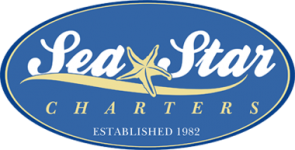Welcome to the Sea Star Ocean Classroom! This oceanographic expedition is certain to be a fascinating learning experience and adventure for you and for your Student Ocean Explorers. This is an excellent opportunity for every student to get their hands wet sampling and measuring local marine environmental conditions and examining coastal habitats. Students will be challenged to interpret their observations and to learn about the connections among our daily lives, the sea, the land and the atmosphere. They will learn how our local environment is connected to the conditions in the rest of the world.
In the most basic sense, the coastal marine environment is another world, one we must understand greatly in order to protect and preserve it. As our population grows, our effect on it and it’s life increases. Actions we take today will determine whether Earth will be preserved for ourselves, future generations and for other species with whom we share this planet. Only through such understanding will we be able to develop successful management programs for our activities and our use of coastal resources.
Your expedition will be a safe one. The 60 foot Sea Star is fully licensed and complies with all US Coast Guard regulations, maintaining the highest standards of safety and preparedness. These standards include regular maintenance inspections, annual certifications, and ongoing training of the captain and crew. All ship personnel are required by the Coast Guard to undergo random drug testing. If there is a chance that the ocean weather may be inclement, the hands-on expedition of discovery will be conducted within the protective and calmer waters of Oceanside Harbor (this may affect some activities). Please click here to see a picture of the Sea Star.
